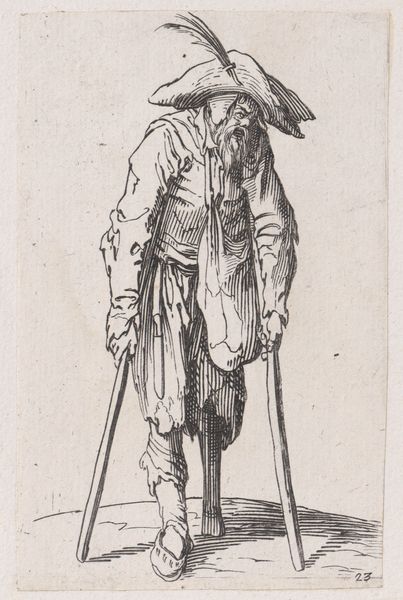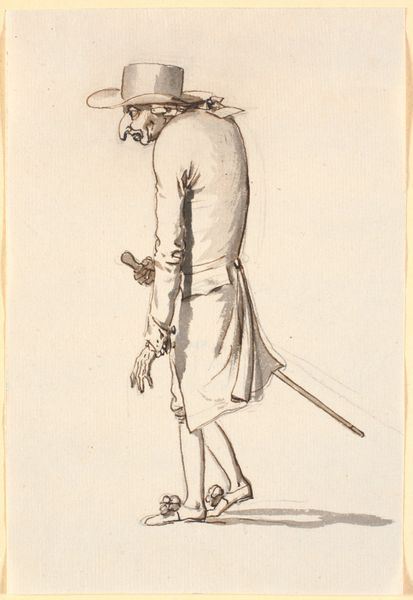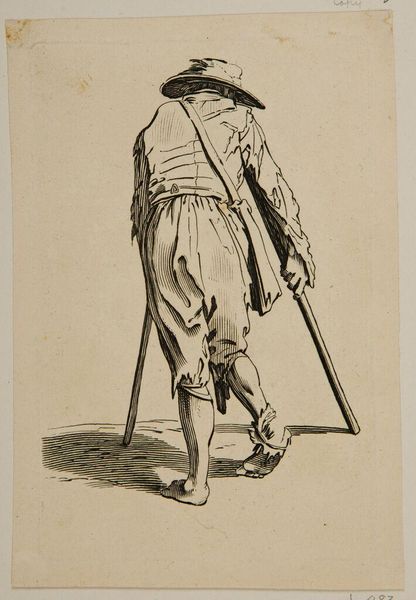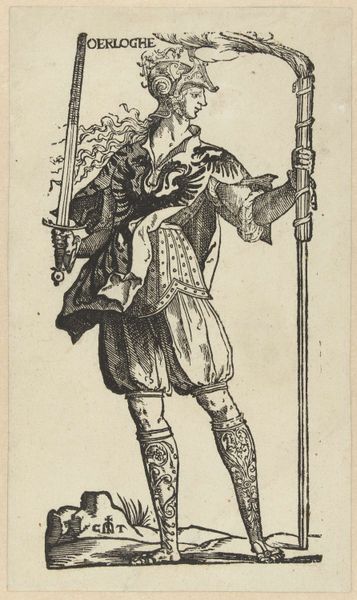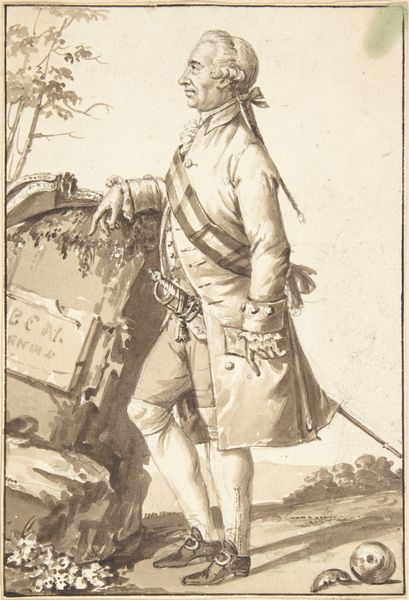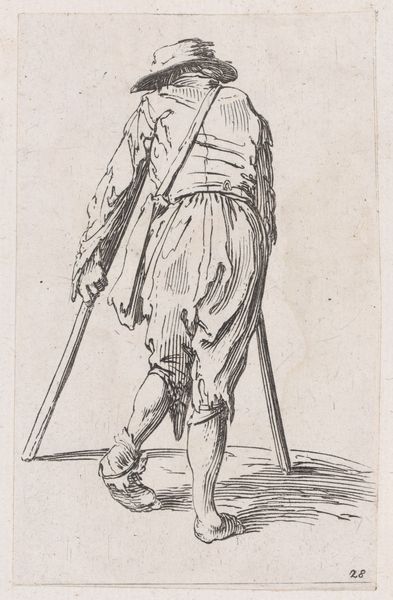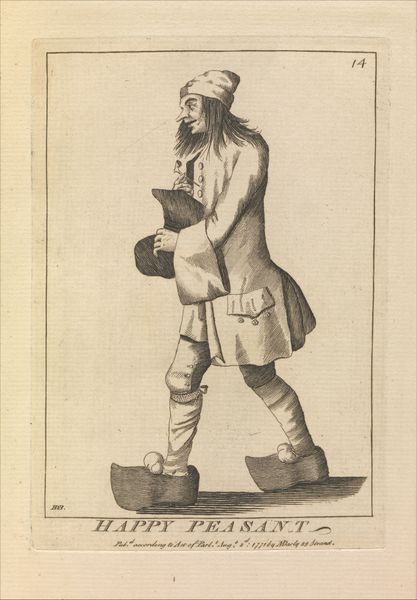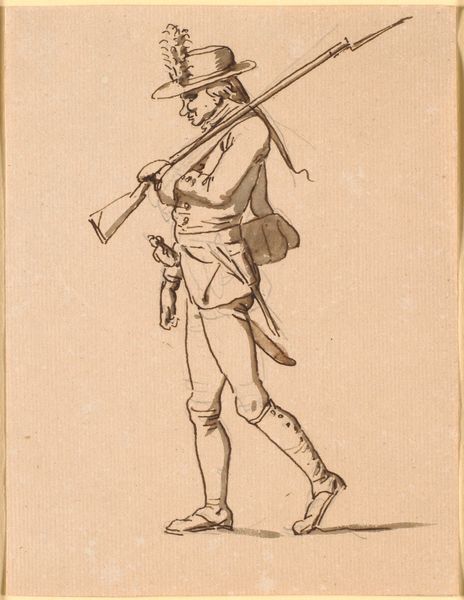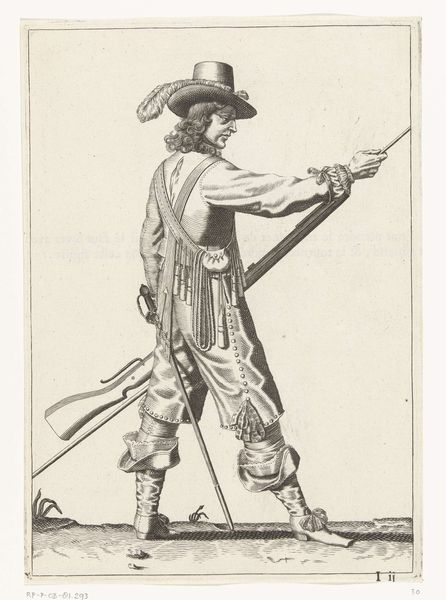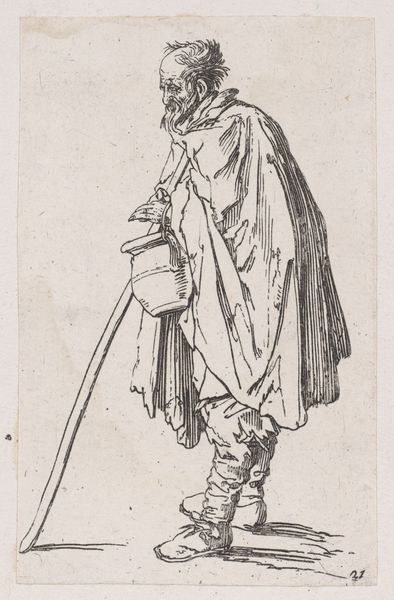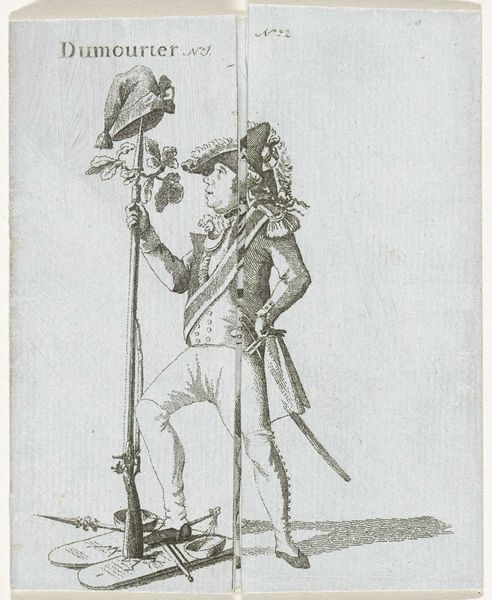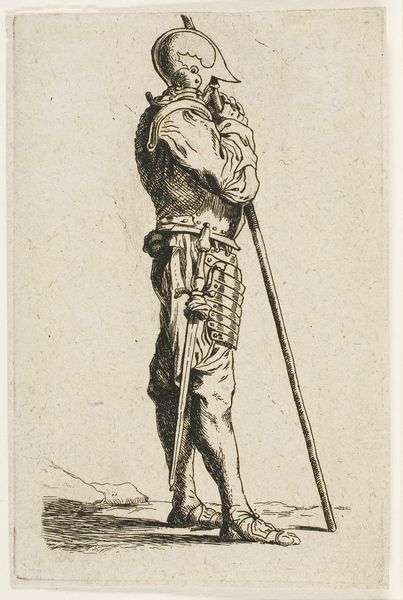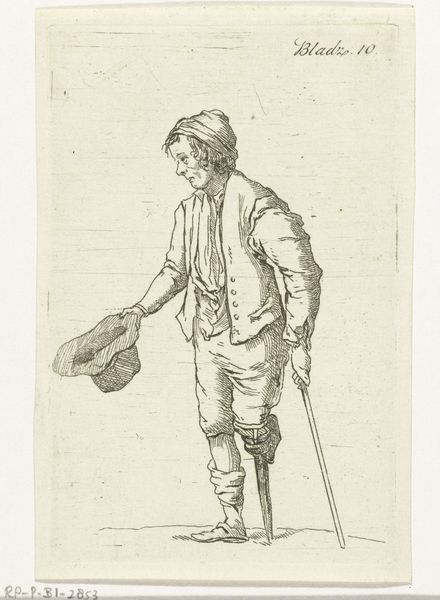
drawing
#
portrait
#
drawing
#
caricature
#
caricature
Dimensions: 187 mm (height) x 125 mm (width) (bladmaal)
Curator: Here we have Nicolai Abildgaard's drawing, dating from the 1780s, titled "En almuesmand set bagfra" or "A Common Man Seen from Behind." Editor: Well, it’s certainly direct. Stark, almost. The muted palette focuses all attention on the lines, creating a somewhat comical figure, wouldn’t you say? Curator: Indeed, its medium being drawing lends to an intimate and immediate engagement. The artist’s caricature captures not just an individual, but evokes ideas concerning social standing and the portrayal of the working class within the artistic landscape. Think of who could afford artworks! Editor: True, but look at how Abildgaard handles line and shading! See the almost rhythmic repetition in the folds of the man's smock or cloak. Then, notice the contrast—the roughness of the boots versus the implied texture of his hat. There is tension! The light source seems carefully considered to define form without prettifying it. Curator: He's leaning on a staff and his posture suggests weariness or perhaps resignation. That speaks to labor, the realities of the social conditions of the time, the tools used, and who benefitted. It is more than formal arrangement, I'd suggest. It is about class consciousness being articulated by an artist who understood social power and hierarchy. Editor: Granted, there's undeniable social commentary. But the artistic choices are what drive the meaning. Take away the compositional strategy—the off-center figure, the deliberately obscured face—and what message would remain? This aesthetic device forces the viewer to consider him beyond just social critique, inviting us to project onto him. Curator: What is telling is the deliberate act of depicting someone usually absent from the canvas. Abildgaard here shines a light on a specific segment of society and its material existence. Editor: Perhaps. It’s this visual encoding though, these arrangements, that imbue a simple sketch with such interpretive richness. Regardless of intent, form dictates reception, no? Curator: So we have come to a fascinating intersection – how the context shapes form, but equally the reverse is valid too. Editor: Indeed! It leaves the viewer contemplating the work’s meaning and how it sits in social contexts.
Comments
No comments
Be the first to comment and join the conversation on the ultimate creative platform.
